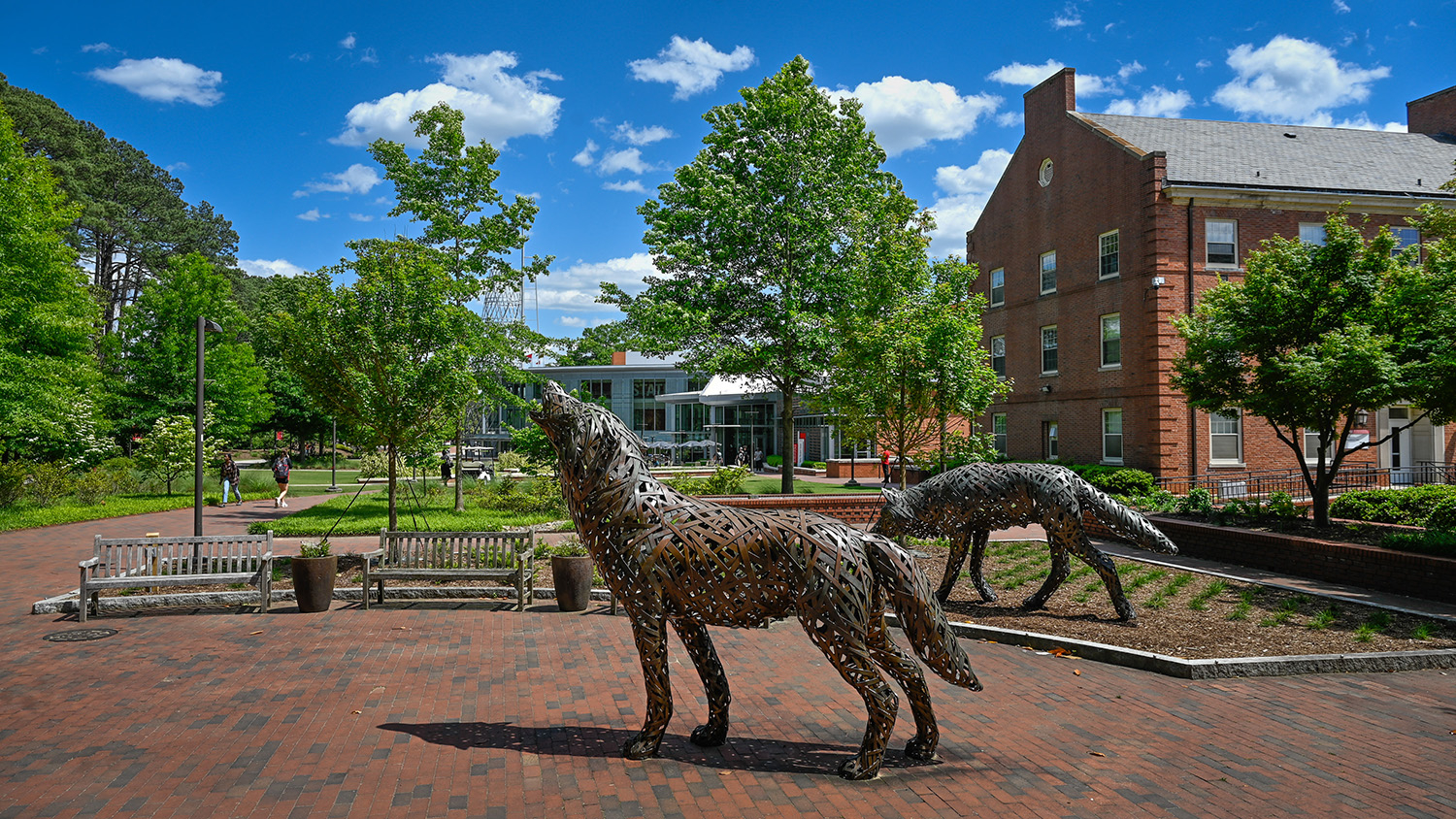Countdown to Research
Dr. Imara Perera and her NC State research team will be watching the final space shuttle launch this week in Florida as rocket boosters ignite, engines rumble and Atlantis lifts off with their plant research project on board.
Scheduled for July 8, the Kennedy Space Center launch will be a dramatic finale to months of careful preparation for an experiment on the International Space Station. Caroline Smith, a research associate who has invested hours working with microscopic seeds for the project, knows it’s a one-of-a kind experience. “This is something you want to have in your life story.”

This End Up
Though the shuttle program is ending, research at the International Space Station continues to explore the frontiers of long-distance space travel. Plant could help feed space travelers and clean the air and water on future missions. Perera’s research project with colleagues Chris Brown and Heike Winter-Sederoff is exploring how plants adapt to changes in gravity at the molecular level.
Earth’s gravity helps plants orient themselves so they send shoots up and roots down. Change disrupts normal growth, whether a plant is laid on its side or placed in microgravity.
“Although plants don’t get up and walk, they respond to signals they’re being bombarded with,” Perera says. “If they’re blown over by wind in the field temporarily, they don’t reorient. But if they’re completely knocked down on their sides, they will.”
In the space station’s orbit 220 miles above the earth, plants experience a sensation of weightlessness in microgravity. Within five minutes of gravitational changes, plants send out molecular signals.
NC State’s project includes plants that have a mammalian gene inserted. That gene produces an enzyme to remove the signals as soon as they come up.
The research plant, Arabdopsis thaliana, actually a weed, was the first plant to have its genome mapped. It’s an ideal space plant: compact with a quick life cycle.
Remote Control Research
Once in space, the seedlings will get round-the-clock LED light and regular watering. One set of plants will experience microgravity, while another is spun in a centrifuge to simulate earth’s gravitational pull.

Every six hours, scientists will get a snapshot of the seeds germinating inside the special chambers. Once the seedlings have grown for six days, astronauts will remove and freeze them so that researchers can look for molecular changes back on earth, building both agricultural and space knowledge.
Although the prospect of the final shuttle flight was exciting, scientists tempered their excitement until it was too late for their project to be bumped.
Perera isn’t sure how long it will be before the frozen plant samples are in her hands or exactly how they’ll return to earth. That’s just part of the adventure of research in space.
Structural changes in diversity, outreach and economic development programs took effect July 1 as part of the university’s strategic realignment. .
· NC State’s new Office for Institutional Equity and Diversity merges the Office for Equal Opportunity, Office for Diversity and Inclusion and three Student Affairs offices: Multicultural Student Affairs, the GLBT Center and the Women‘s Center. Joanne Woodard will serve as vice provost for institutional equity and diversity.
· Dr. Jose Picart, former vice provost for diversity and inclusion, will take on new responsibilities as special assistant to the provost. He will lead programs in Extension, Engagement and Economic Development, scheduled to close at the end of the year when Dr. Jim Zuiches retires. In addition, Picart will direct the Shelton Leadership Program and coordinate outreach efforts such as the Raleigh Colleges and Community Collaborative, NC State/Wake County STEM Early College High School and military education programs.
· The McKimmon Center and Continuing Education programs will move to the provost’s office with leadership from Alice Warren, vice provost for continuing education.
· An expanded Office of Research, Innovation and Economic Development will merge economic development activities, including the Small Business Technology Development Center, under Vice Chancellor Terri Lomax.
For full details, read the memo from Provost Warwick Arden.
- Categories:


